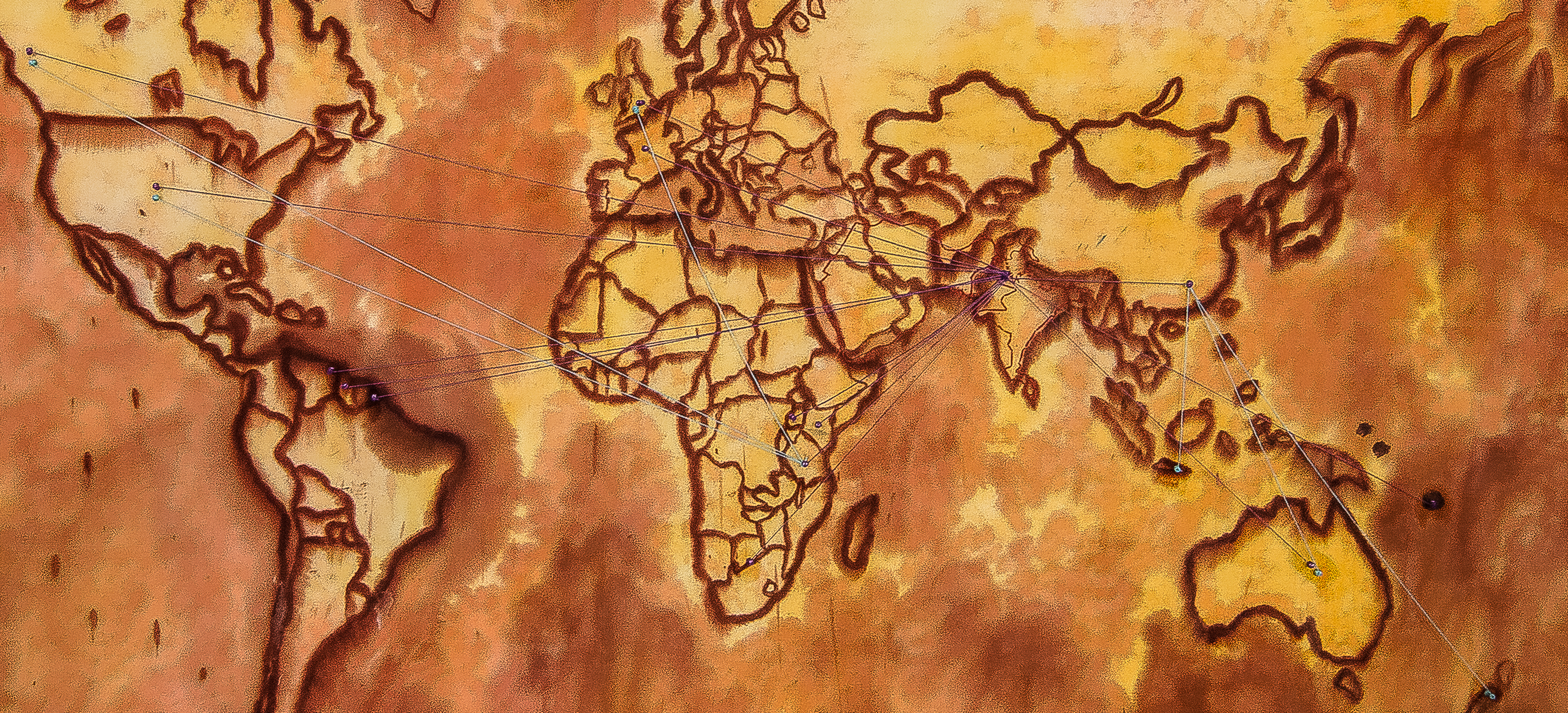The East India Company brought the first recorded Indian over to the UK in 1614, which suggests there was trading between India and the UK.
A verse written by Guru Gobind Singh Ji (the tenth Sikh Guru), in praise of God, references the British and French & suggests awareness of European countries.
“The people of France and England revere Thee, the inhabitants of Kandhaar and Quraishis know Thee; the people of western side recognize their duty towards Thee.”(c.1600) Akal Ustat, Dasam Granth, p89
This suggests that there may have been opportunities for Sikhs from India to travel to England around this time.
The 19th and 20th centuries saw the main waves of Sikh migration. The migration that took place in these centuries has resulted in the formation of large, long-standing, developed Sikh diasporas around the world.
The map below was hand painted and mounted onto a frame by volunteers within three days. They then added threads to represent various elements of migration.
To begin with these chose to highlight the travels of Guru Nanak Dev Ji, the first Guru of the Sikhs.
Guru Nanak Dev Ji travelled extensively during the late 15th & early 16th centuries to spread teachings to uplift humanity. The figure of Guru Nanak Dev Ji making his journeys inspires Sikhs to reach out to, and engage with people from different walks of life. His four known journeys are marked on this map by the red thread, and four distinct styles of stitching.
The purple threads are representative of the first known wave of mass migration from c.17th and 18th centuries. The blue threads are representative of the second wave of migration, mainly consisting of double migrants, showing the known Sikh settlements by c.2004.
We are aware that migration is a continuing process and that as the world continues to change, the statistics and data will change. We also recognise that not all travellers are documented, and therefore it can be difficult to get accurate statistics.
The data we have has been collated by our research volunteers. You can read more about the research process here.
